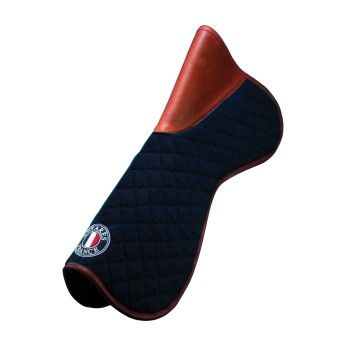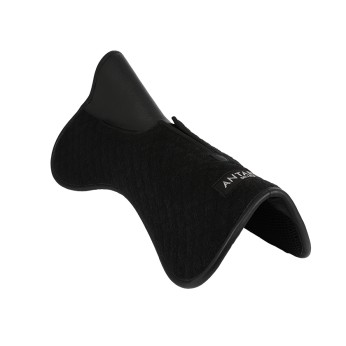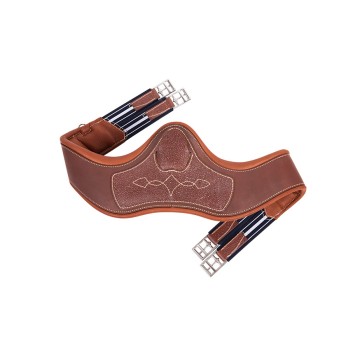Advice
3 tips to prevent your horse from getting back pain
19 September 2022
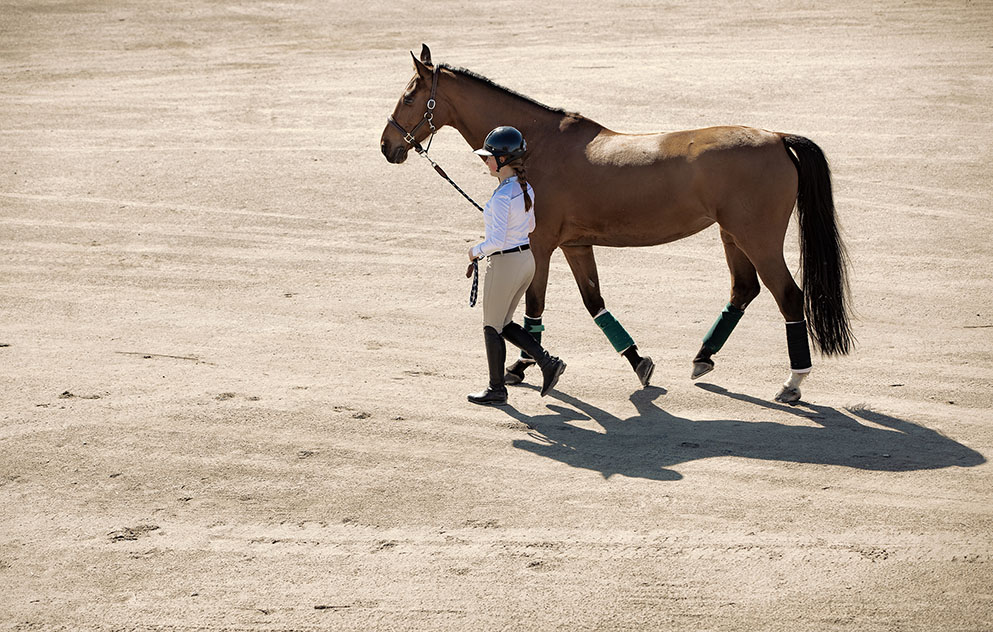
Advice
19 September 2022

Your horse may show signs of back pain at various times. This may be when grooming, saddling up, girthing, during a workout or simply when you run your hand over its back. These are examples of outward, visible, signs of discomfort but it may be that you don’t actually realise that your horse is suffering from back pain.
Aside from the weight of the rider, a horse’s back responds to all kinds of effort (to different degrees) that you ask of it. The back connects the fore and hindquarters, so it’s vital that you care of your horse’s back for it to perform properly. That’s why, we’ve teamed up with Marine Cerles (professional osteopath and Chief Executive of the EOS Animal Osteopathy School to give you 3 tips to prevent your horse getting from getting back pain.
A horse’s back is part of the spine and comprises:
The withers are composed of the first 10 thoracic vertebrae. These vertebrae have prominent dorsal spinal processes, or vertebral flanges, sometimes exceeding 30 cm. This has a key influence on whether back pain might occur.
As such, when your horse raise its neck, its back hollows while the nuchal and supraspinous ligaments slacken. The edges of the dorsal spinal processes in the withers (also called dorsal aphosysis) move towards each other causing friction.
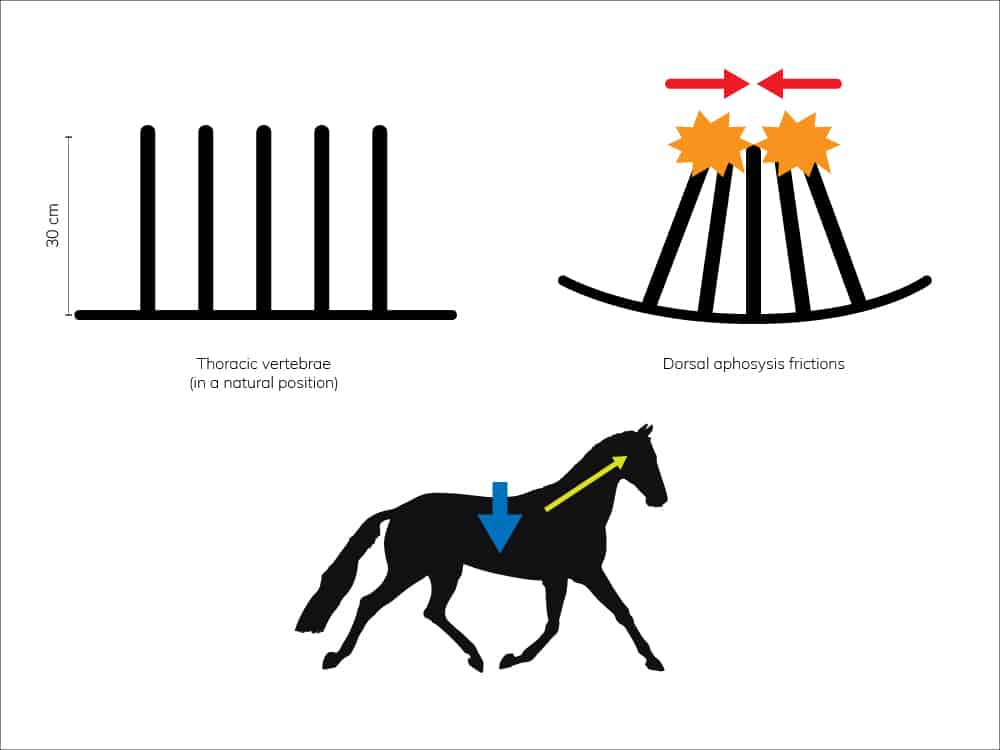
By contrast, when your horse lowers its neck, the nuchal and supraspinous ligaments tighten. This widens the space between the dorsal spinal processes and the spinal column lengthens. Your horse’s topline will also rise which helps its back.
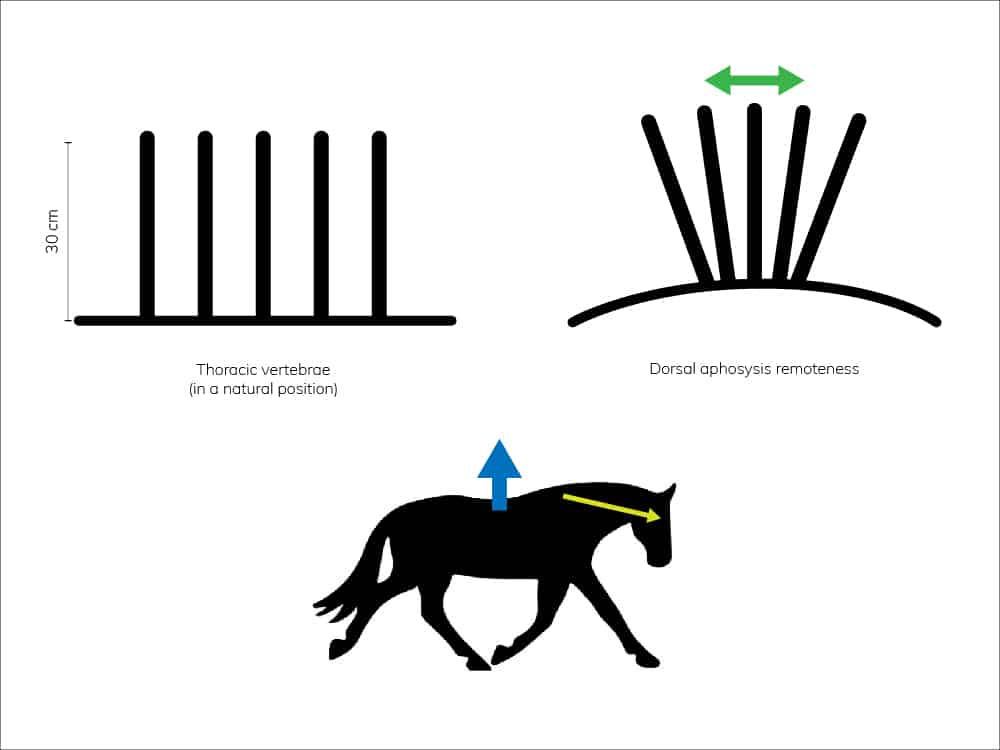
The desired virtuous circle when giving your horse a workout is to have elevated withers, a rounded back and good engagement of the hindquarters.

You can find additional exercises on the IFCE website.
Back pain can have many causes.
The source can be where the pain is found but it can also be more distant. For example, some back muscles are attached to the lumbar region or even the head. Foot problems or discomfort in the hoof capsule can lead to tensing muscles when pushing down and landing, causing back pain. This is when the horse ‘compensates‘.
So, it is really important to pinpoint the reason for this back pain. Subsequent treatment provides two options:
Ideally, it’s best to pre-empt the factors causing the back pain. Here are 3 tips to do this.
Whether you give your horse a workout on foot or in the saddle, it must be adapted to its age and body type. Be especially careful when exercising young horses which are still growing. Always increase the tempo of your sessions gradually.
Make sure you give your horse a warm-up before working on its back. Relaxation exercises are perfect to prepare your horse’s back and warm up the muscles. If you can, we advise walking your horse outside on a long rein.
[Read our article for more details on the various stages to properly relax your horse.]
Your saddle must match your horse’s body. Horses have long or short backs that can be more or less hollowed, or they might have very prominent withers. Using ill-fitting tack causes plenty of back pains. To the naked eye, it isn’t easy to know if your saddle is a proper fit for your horse. Ideally, you should call a professional to conduct a fitting session.
This is exactly what all our trained saddle fitting Antarès experts do. The art is in observing a horse, to study its morphology and the way it moves. Next, specific and highly accurate measurements are taken to make a saddle that meets the needs of both horse and rider. Arnaud, our specialist covering the Paris and Normandy area gives us his advice.
“The first thing to check to see if your saddle fits your horse is if it is balanced, i.e. if it sits straight. When you put it on your horse’s back, the saddle must lie perfectly flat. The cantle and pommel must also be aligned”.
Expert tip:

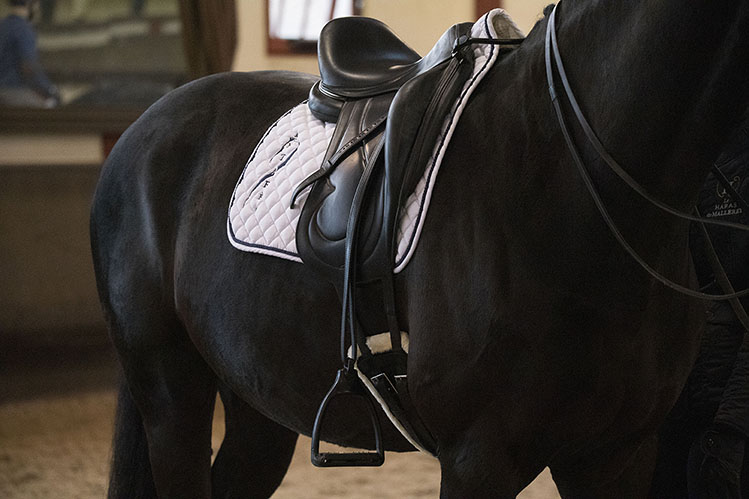
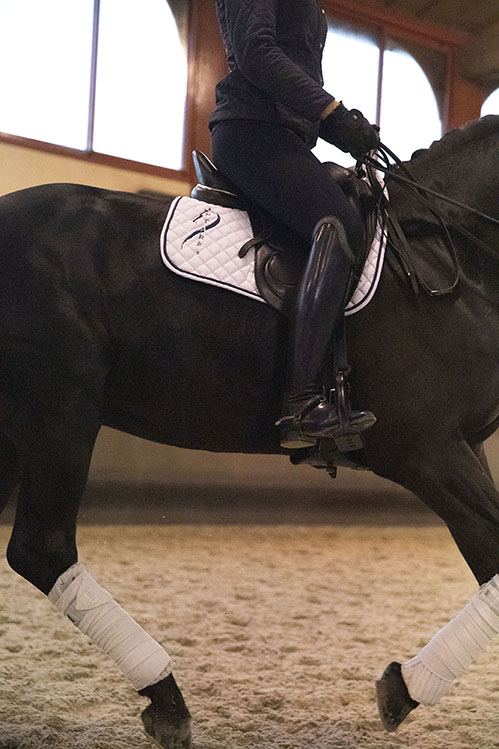
“The saddle panel must hug the scapula from top to bottom. There must be constant contact, no gaps. Make sure the check for pressure points. You should barely be able to see light between the two. If you can, the saddle is not sitting right and you must change it or the saddle panels. Don’t forget to check how far the saddle fits front and rear. Much is made of saddles hindering the horse’s forequarters but people often forget the rear of the saddle which can create pressure points on the horse’s back. Once again, it’s all about balance”.
Expert tip:
Lots of riders make the mistake of adding additional padding to prevent back problems. However, as Arnaud confirms, the decision to add half pads requires some thought.
“The half pad must meet a clearly identified need from a fitting session although this doesn’t apply for bespoke saddles. A poorly fitting half pad could create pressure points or an imbalance as the saddle will sit higher and contact with the horse will be lost”.
“Half pads are still a good option for a second-hand saddle, to match it to your horse’s back. For young horses that have not completely stopped growing, half pads with corrective shims are an option. If you ride several horses using the same saddle, a half pad can adapt it to each horse’s own back shape”.
“This is when it’s best to involve people whose job it is to fit saddles. With our training, we take all the necessary steps to make the perfect saddle that meet the needs of both horse and rider”.
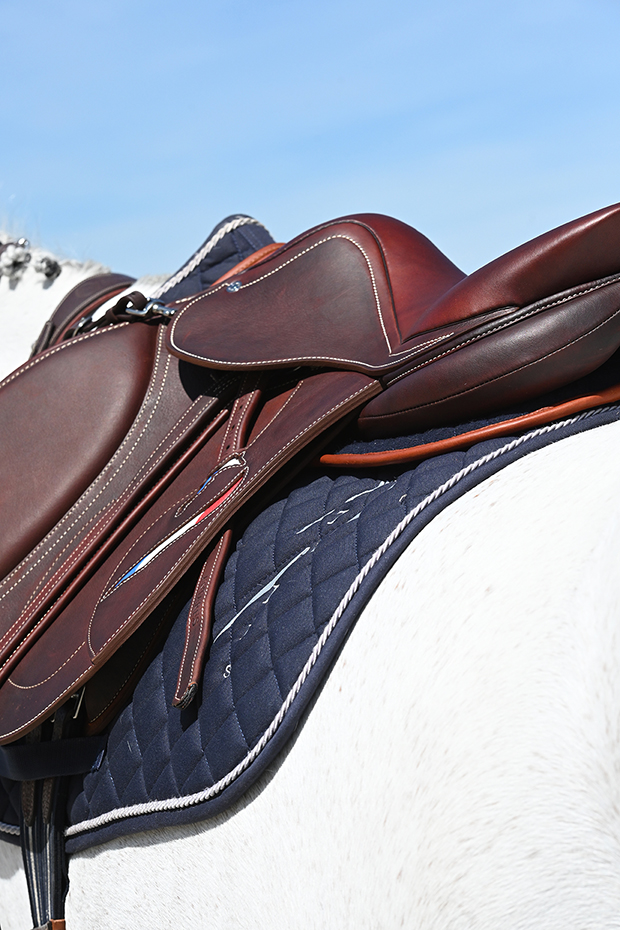
Choosing the right girth is also important An ill-fitting girth could restrict movement, diminish or weaken performance causing back pain. In some cases, the girth can even pull the saddle back on the horse. Go for light, padded anatomic girths that free-up your horse’s elbows. The wider the girth, the less it presses on a specific part of the horse’s body.
As Marine Cerles, a professional osteopath, explains, any treatment varies according to each horse’s needs.
It is best to consult an osteopath before and after the competition season. Make sure you stick to the time required for rehab and physiotherapy after each session.
One or two sessions are recommended during your competition season, based on the level of training and events.
One session before and after breaking-in is advised to avoid a first and painful training experience for a young horse. This can be followed up with a second session after a few months. The horse’s muscle build and balance will change greatly during its first year of training.
So, it’s best to care for your horse regularly rather than consulting an osteopath only once a problem arises.
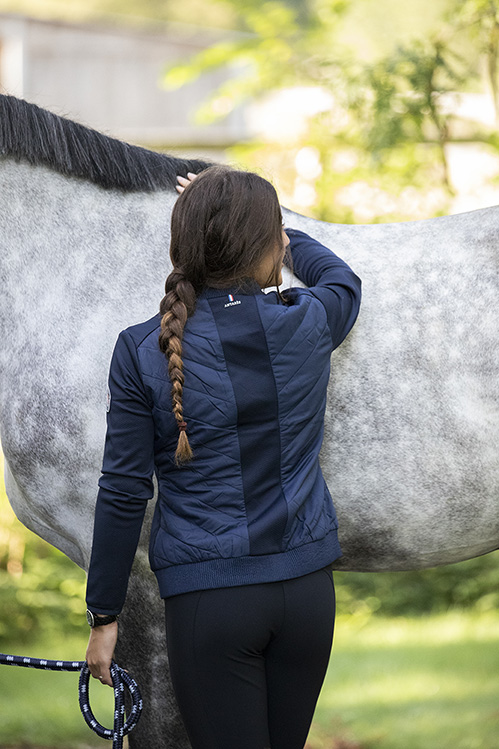
This non-exhaustive list gives you some (good) reasons to call an osteopath.
There are some simple exercises to carry out before and after each workout to sooth back pain.
First of all, a vigorous grooming stirs the muscles. If you have the facilities, the heat from warm-up and recovery session in a solarium will soothe your horse. If you don’t have access to a solarium, heated massage therapy blankets can be useful before and after a workout. In addition, you can start your warm-up by taking your horse for a walk.
You can also apply creams to relax the muscles.
One very easy physical exercise to do is to use a carrot to move your horse’s head from side to side independent of its shoulders, then low between its front legs to stretch as far as possible. This will not only stretch the neck but the back too.
An animal osteopath must have completed 5 years’ study. They must be listed in the French national occupational standards register (RNA) and have acquired a range of osteopathic techniques to best suit the animal’s nature and physical needs.
Back pain is a very frequent form of discomfort among horses. We strongly advise you to regularly check your tack properly fits your horse’s build. You should also seek continuous monitoring and care from professional osteopaths. Special thanks to Marine Cerles, Chief Executive of the EOS Animal Osteopathy School for her valuable advice. As she points out, please don’t wait until your horse starts to feel pain before you take action. Regular care and treatment will ensure your horse’s comfort and well-being.

Follow the EOS Animal Osteopathy School on Facebook and Instagram.
